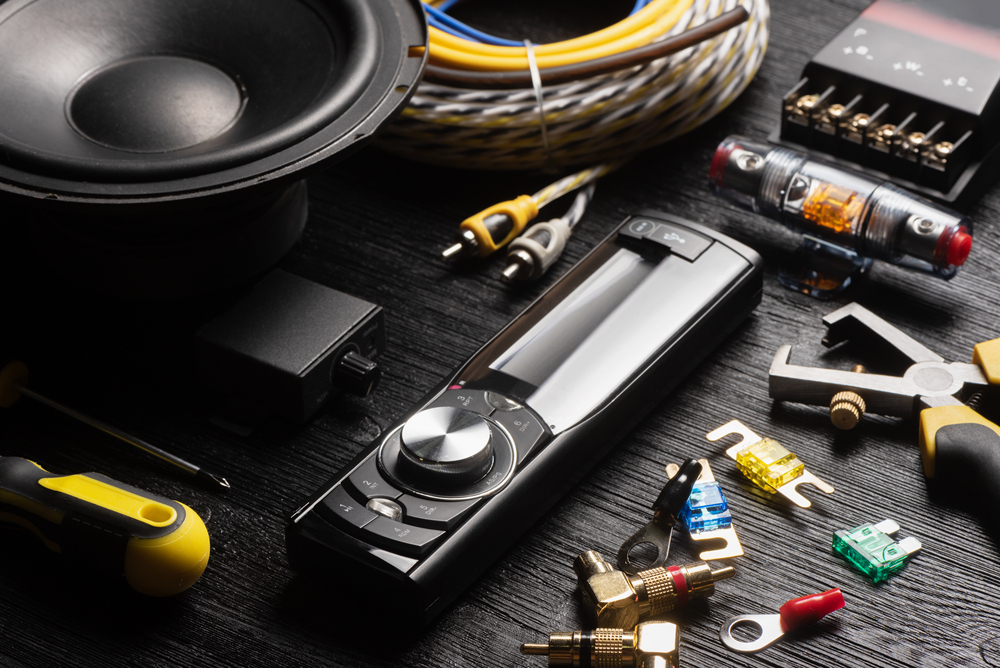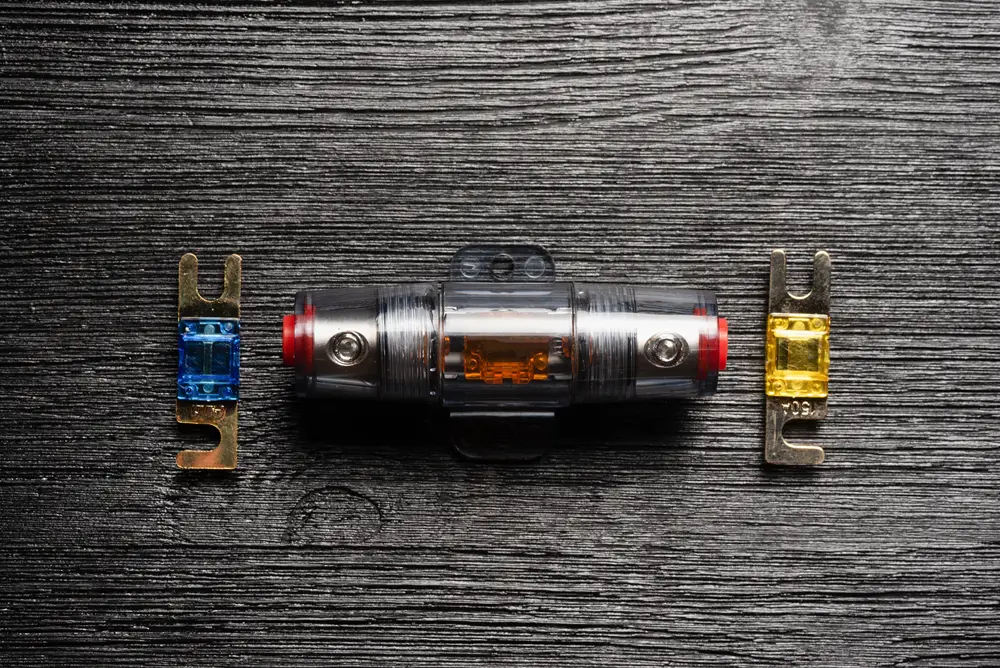Why Subwoofer Keeps Blowing Fuse? Designed specifically for reproducing low-pitched audio, subwoofers do tend to face a variety of issues. But one of the worst issues to face is when your subwoofer keeps blowing the fuse.
But why does your subwoofer keeps blowing fuse?
The fuse blowing repeatedly is a sign that the system either has an overloaded circuit or a short circuit connection. From a faulty amplifier to a defective subwoofer itself, a couple of different things can cause an overload of the circuit or circuit being shorted. You will need to repair that particular component or replace it completely.
Why don’t we investigate further to determine the true cause of your subwoofer’s continuous fuse blowing?
Table of Contents
Why Does Subwoofer Keep Blowing Fuse?

The subwoofer on your home theater system is to give your music more bass and depth. B&W or Klipsch whichever brand subwoofer you are using, it’s really annoying when the subwoofer repeatedly blows a fuse. It will ruin not only the subwoofer but also the home theater system.
Overloaded circuits and short circuit connections cause your subwoofer to blow the fuse repeatedly. The overload circuit system keeps track of how much electricity is entering a device.
A subwoofer may occasionally draw more power in an effort to get additional bass from the system. As a result, the circuit is opened by blowing the fuse’s internal material. This is done as a safety measure.
A short circuit, on the other hand, is caused when the positive and negative comes into direct connection. This makes the device draw a large amount of current than its safety limit. As a result, the fuse gets blown.
Overload and short circuits can be caused by a couple of different things. You need to inspect all the possible reasons carefully to identify the real culprit.
| Reasons | Solutions |
| Short IC | Replace the IC |
| Incorrect Fuse Size | Install right size fuse |
| Faulty Amplifier | Repair /Replace Amplifier |
| Loose Wiring | Connect wires properly |
| Defective Speaker | Check speaker components and repair/replace accordingly |
| Damaged Subwoofer | Check the driver, voice coil & replace |
| Faulty Power Supply | Replace or fix the power supply |
All of the factors listed in the table could be behind your subwoofer’s fuse blowing. Let’s check exactly why your subwoofer fuse blew and ways you can fix it.
Reason 1: Short IC
The amplifier’s integrated circuit, or IC, may occasionally be short. This happens when the internal components of the IC come into contact with one another and create a direct electrical connection.
Due to this connection, the circuit experiences heavy current flow. As a result, the circuit’s internal resistance drops and the fuse blows.
Solution:
The damaged IC must be changed as soon as possible. You will find a good quality Hilitchi IC kit for only $22 on amazon. New IC will cost you around $10-20. You will require technicians’ help with this. Because this is a complicated procedure and needs a thorough understanding of electronics.
Reason 2: Incorrect Fuse Size
A subwoofer can draw a lot of electricity, which a small or incorrect-sized fuse won’t be able to handle. This can cause the fuse to blow regularly and damage the subwoofer.
Solution:
You need to purchase a correct-sized fuse and replace the old one. The correct fuse size for your subwoofer will depend on the impedance and current draw of your subwoofer.
The sum of these two values will be the ideal fuse size for your subwoofer. But it’s always better to get a fuse with a little higher limit. For instance, a subwoofer with a 10A current draw and an 8Ω impedance would require an 18A or 19A fuse to keep it from blowing.
Reason 3: Faulty Amplifier
Faulty amplifier is one of the reasons behind the overloaded circuit. Usually, the JBL subwoofers keep blowing the fuse because of this.
If the circuit in the amplifier is designed poorly, it can cause a sudden voltage surge. At the same time, it can cause the amplifier to not have enough voltage as well.
The capacitor or the resistor in the amplifier can also wear out over time and create a short circuit connection. Even a malfunctioned cooling system can cause the amplifier to overheat, resulting in a blown fuse.
Solution:
You need to disconnect the amplifier and check for visible signs of damage. Look inside the amplifier if there are no externally visible signs of burnt parts.
It’s best to get a professional to look inside the amplifier circuit design. Without the proper knowledge, you won’t be able to detect the actual issue. Sometimes, adding or rewiring can solve the problem and other times you need to replace it completely.You can get a new amplifier from $ 20 to 200.
To fix the worn-out capacitors and resistors, you will require replacement. You can easily clean the dirty air filter and repair the small leakage issue in the cooling system. But if the fan is damaged, you need to replace the cooling system completely.
Reason 4: Loose Wiring
Wires can come loose over time from their terminal due to vibration or any other overlooked movement. These loose wires aren’t able to pass adequate current which initiates a higher current draw. When the fuse is not able to handle the additional current draw, it blows as a result.
Loose wires can also create a short circuit connection. This can cause the fuse to blow as well.
Solution
You need to check the wire connecting the subwoofer and soundbar and the wire from the power source and plug them in properly. Make sure there are no gaps between the terminal and the wire.
While you are plugging the wires, ensure there are no tears or corrosion on them as well. If you do find any wear or tear on them, replace them with new wires as soon as possible.
Reason 5: Defective Speaker
A subwoofer’s fuse can also be blown by a faulty speaker. With time the speaker components get worn out or damaged. Worn out speaker cone, malfunctioning crossover, and damaged voice coil can cause the speaker to draw excessive current.
As the speaker’s output is connected to the subwoofer’s input, this excessive draw can cause the subwoofer to blow the fuse. These faulty speaker components can also create a short circuit between them and result in a blown fuse.
Solution:
Check the speaker visually for any damage, such as cone tears or holes. You can also use a multimeter to determine the impedance of the speaker.The red probe and black probe of the multimeter should be connected to the positive and negative sides, respectively. Now calculate the impedance.
An impedance of 4 to 8 ohms is normal for a speaker. If the impedance is significantly higher than this, there may be a speaker issue.
The damaged voice coil or speaker cone needs to be replaced.Using a knife carefully cut through the cone,dust cap and spider to remove the voice coil.Now put the new coil back in old coil’s place and use some sim between pole piece and bobbin or voice coil former.
Normally bond paper is used on sides to hold the coil at the center of pole piece.Now use glue and put the former back on to the spider and the cone.Wait for the glue to dry and remove sim afterwards.Check if the cone can move in and out or not and replace the dust cover.
On the other hand rewiring the crossover of the speakers will occasionally fix the problem. But you also need to replace the crossover if any parts are damaged.
Reason 6: Damaged Subwoofer
Like the speaker the subwoofer itself can be worn out over time and result in a blown fuse. Damaged cones, crossover, and transducers can cause the excessive draw of current. Moreover, the voice coil can be short as well.
Solution:
Look for any apparent signs of damage on the subwoofer. Replace the speaker cone or voice coil if they are broken.
In some cases, the issue can be resolved by rewiring the subwoofer crossover. However, you must also replace the crossover if any of its components are broken.
Reason 7: Faulty Power Supply
The subwoofer’s fuse can easily explode if the home theater system has an unbalanced power source. It can be caused due to a broken voltage regulator, a shorted diode, or a broken transformer.
These damaged components draw an abnormal amount of current and overheat the system. So, in order to protect the home theater system, the fuse is usually blown.
Solution:
First, check the regulator and transformer to see if they are visible damage. Check the power supply’s voltage output with a multimeter. The power supply may malfunction if the voltage is excessively high or low.
Additionally, you need to examine the power source’s continuity. The power supply is in good shape if the continuity tester illuminates or the multimeter displays a reading. If it does not, it is most likely broken.
All of this demands extensive knowledge, so it is preferable to seek assistance from a technician.
Now, you know the reason behind the blown fuse and can fix it. But you need to make sure it is maintained properly to prevent further damage.
Why Subwoofer Keeps Blowing Fuse? How to Prevent Your Subwoofer from Blowing Fuse

A home theater subwoofer can continue to function at its peak and last for many years with regular maintenance. Here are some pointers to keep your subwoofer in its best condition and avoid future accidents
- Make sure the subwoofer is always in a dry location. Stay away from moist or humid areas like restrooms. Use a dry towel to clean the subwoofer to get rid of dust and other particles.
- Keep the subwoofer in a well-ventilated area to keep them from overheating.
- Always raise the subwoofer by the edge or base when moving it to prevent harming the speaker or internal parts.
- Regularly check the wiring to ensure that it is firmly attached and there’s no wear or tear on them.
- Always play the system at the recommended limit, don’t overdrive your subwoofer by setting the volume too high.
By following these suggestions you can help your subwoofer to operate at its optimum condition. For any additional guidelines or advice on maintenance, check the manufacturer’s handbook.
FAQs: Why Subwoofer Keeps Blowing Fuse
What does a blown fuse on a subwoofer look like?
Why Subwoofer Keeps Blowing Fuse? A broken filament inside the glass fuse of a subwoofer indicates a blown fuse. As a result of overheating, the fuse may also become foggy or discolored. The glass of the blown fuse may occasionally have a noticeable crack as well.
Can a higher amp fuse be used to replace a blown one?
No, don’t exchange a blown fuse with a higher amp-rated fuse. The fuses are designed to be the circuit’s weak link. It protects the electrical components when the safety limit is crossed. The device won’t blow the fuse when it should if a larger amp fuse is used. This can damage the whole system as a result.
How long does a subwoofer last?
A subwoofer can last anywhere from 5 to 14 years. The average person should be able to get 10+ years out of their subwoofer if it is well-maintained and not misused.
End Word: Why Subwoofer Keeps Blowing Fuse
Why Subwoofer Keeps Blowing Fuse? That concludes our discussion on why the subwoofer keeps blowing fuse. Hopefully, the description above helped you determine why the fuse on the subwoofer keeps blowing.
After you have replaced the old fuse, follow the maintenance steps above to prevent future accidents. If the replacement is too technical for you we always suggest consulting with a technician.
Until next time!
